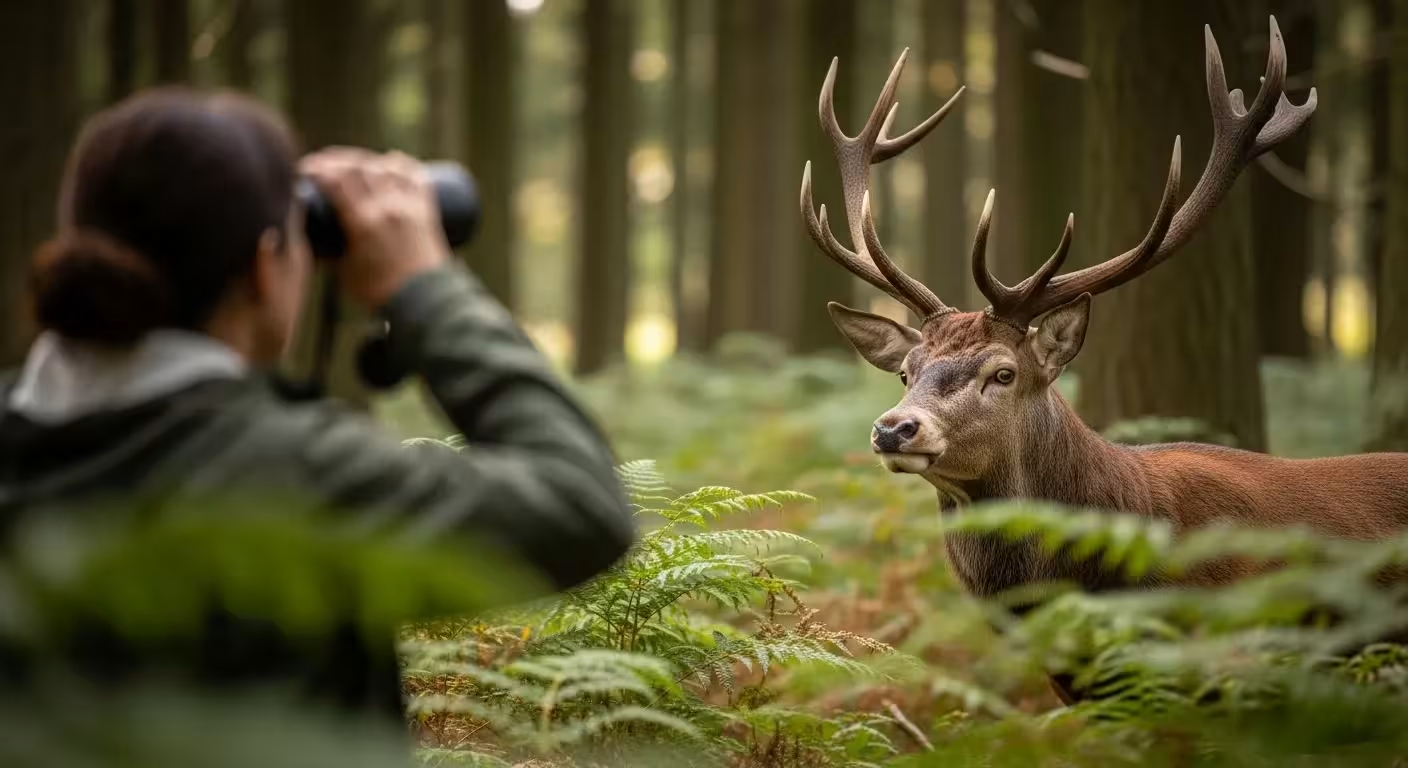
The First Rule of Tracking: Safety and Ethics Above All
Before we dive into the details of toes and claws, the most important lesson in wildlife observation must come first: respect. The goal is to observe animals without disturbing their natural behaviors or putting yourself, your pets, or the wildlife at risk. Every track is a sign of a life being lived, and we are privileged guests in their world.
The core principle is to maintain a safe and respectful distance. For small mammals like squirrels and rabbits, a distance of 25 yards (about 75 feet) is often sufficient. For larger animals, especially predators like coyotes or bears, or animals with young, that distance should increase to 100 yards or more. If an animal changes its behavior because of your presence—if it stops feeding, looks alert and anxious, or moves away—you are too close. The best tool for a tracker is a good pair of binoculars, not brave feet.
Follow these essential ethical guidelines every time you head out:
Never Feed Wildlife: Intentionally feeding wild animals can make them dependent on humans, lose their natural fear, and lead to aggressive encounters. It often does more harm than good, disrupting their diets and social structures. Store trash and pet food in secure containers to avoid unintentional feeding.
Keep Pets Leashed and Under Control: A free-roaming dog can harass or injure wildlife, and can also be injured in an encounter with a defensive animal like a raccoon or coyote. Keeping your pet leashed protects everyone.
Respect Property and Regulations: Always be aware of whether you are on public or private land. Obey all posted signs and regulations. Many parks and natural areas have specific rules about staying on trails to protect fragile ecosystems and wildlife habitats. For guidance on visiting public lands, the U.S. National Park Service provides excellent resources on responsible recreation.
Leave No Trace: This classic outdoor ethic applies to your backyard as much as it does to the backcountry. Pack out everything you pack in, and leave nature as you found it—or better. This means not disturbing nests, dens, or other animal homes you might discover.
By putting safety and ethics first, you ensure that your curiosity enriches your life without detracting from the lives of the animals you admire.















